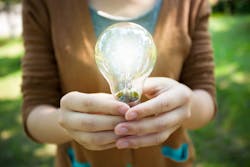Drought-hit California sees growing number of water technology patents
SAN FRANCISCO — Nov. 5, 2015 — California is still facing a severe drought, but new water technologies could help ease shortages, according to a press release.
A study by nonprofit, nonpartisan organization Next 10 has found that water-related technology patents are on the increase in California, with 137 registered in 2014, noted the release. The majority of these covered water treatment technologies, while advances were also made in water supply networks and efficiency measures.
“Californians are used to answering the call for innovative solutions,” commented F. Noel Perry, founder of Next 10, in the release. “In the midst of a historic drought and an economy dependent on a thriving agriculture sector, California urban and agricultural water users are reducing consumption and venture capitalists and entrepreneurs are catalyzing innovation.”
California leads the United States in venture capital investment into water companies, earning $97 million in 2014. Next 10 found that the San Diego region alone attracted nearly $82 million last year, while venture capital investments in Orange County totaled $10 million, followed by the San Francisco Bay Area with $5 million.
“When it comes to water technology, investors, entrepreneurs and municipalities are sparking innovation to increase water supply and reduce consumption through recycled water, improving water metering and management, and desalination,” Perry added in the release. “These investments in innovation will benefit the state and other regions facing shortages now and in the future.”
The report also highlights the significant market potential for and growing interest in water technologies. According to Next 10, reducing leakage from municipal water networks presents a $167 billion global market value opportunity and improving irrigation techniques is a $115 billion market.
“While state and local governments have imposed water restrictions and other policies meant to reduce the stresses on water supplies, we can only get so far by residential users turning the tap on less frequently,” said Doug Henton, co-author of the study and chairman and CEO of Collaborative Economics, in the release. “Investment in technology is critical and will shape the future of water management.”
You can find the entire release here.
